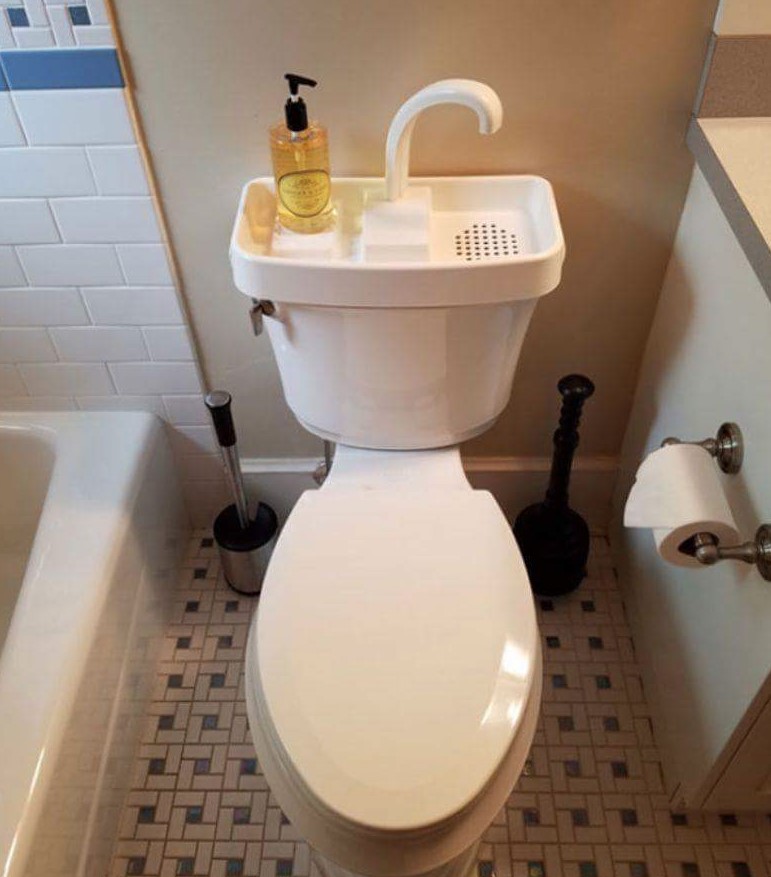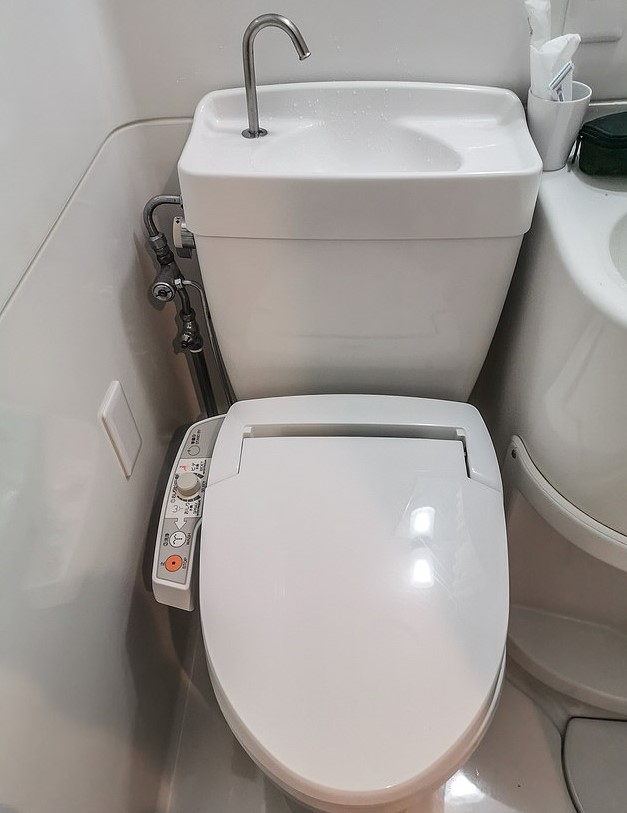Even the most ordinary facets of daily life are infused with Japanese ingenuity, functionality, and attention to detail
A notable illustration of this is the mounting sinks for hand washing in toilets.
With a focus on space efficiency, convenience, and hygiene in Japanese bathrooms, this clever design integration has many benefits.

Focusing on hygiene and convenience
One of the primary motivations behind the integration of handwash sinks with toilets in Japan is to promote hygiene.
By having the sink located directly above the toilet tank or on top of the cistern, users can efficiently wash their hands immediately after using the toilet.
This eliminates the need to move to a separate handwashing area, reducing the risk of potential germ transmission and ensuring optimal cleanliness.

Moreover, the inclusion of a sink within the toilet unit encourages proper hand hygiene practices.
The proximity of the sink serves as a constant reminder to wash hands, reinforcing the importance of maintaining personal hygiene before leaving the bathroom.
This practice aligns with Japan's strong cultural emphasis on cleanliness.
Space Efficiency
Japan is known for its limited living spaces, and maximizing every square inch is crucial.
The integration of handwash sinks with toilets exemplifies the Japanese approach to space efficiency.
By combining two essential functions into a single unit, this design eliminates the need for separate spaces for handwashing, saving valuable room in smaller bathrooms, apartments, and even public restrooms.

The space-saving nature of this design is particularly beneficial in densely populated urban areas where real estate comes at a premium.
It allows architects and interior designers to optimize space utilization while still providing essential sanitary amenities.
The integration of the sink with the toilet not only saves physical space but also simplifies plumbing and installation requirements.
Innovation and Technological advancements
Japanese toilet culture is renowned for its sophisticated technological advancements, and the integration of hand wash sinks with toilets is no exception.
Many of these toilet units feature sensor-based faucets, touchless operation, and water-saving features.
Some models even incorporate self-cleaning mechanisms and warm water bidet functions, further enhancing the user experience and overall hygiene.

The concept of integrating handwash sinks with toilets has garnered attention worldwide for its practicality and efficiency.
As concerns about hygiene and space utilization continue to grow, this innovative approach has the potential to revolutionize bathroom design beyond Japan's borders.
Architects and designers in various countries are exploring similar concepts, inspired by the Japanese model, to create more functional and compact bathroom solutions.






